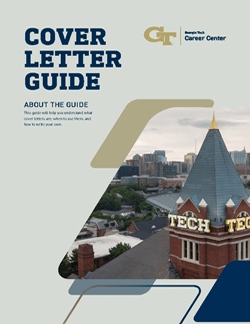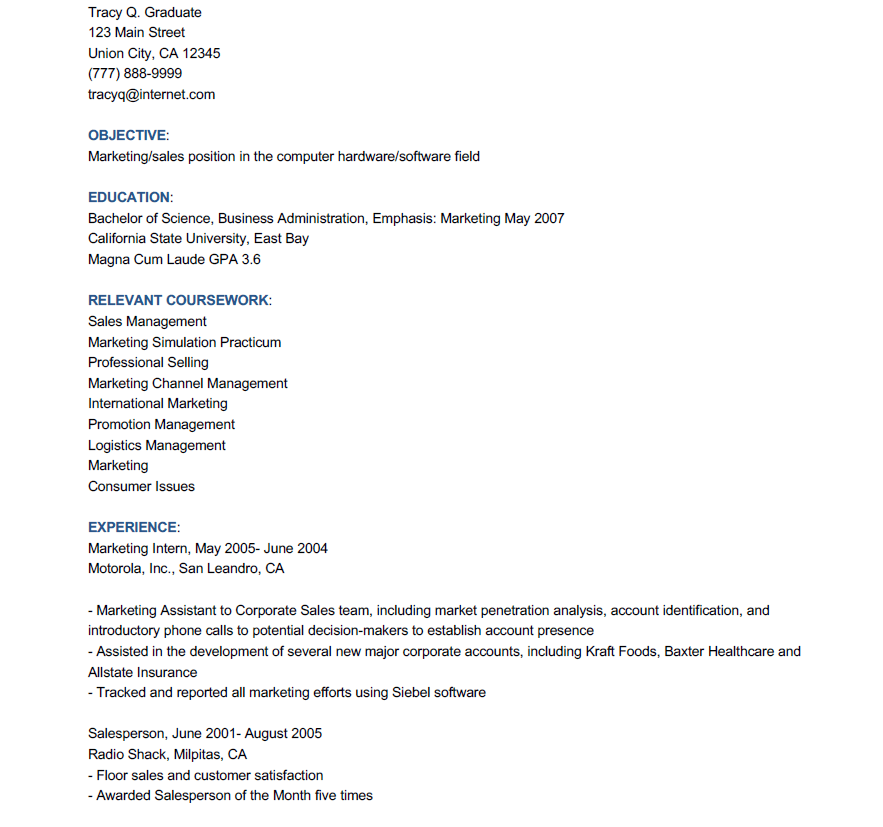Now that you’ve found a great job opportunity, it’s time to apply. See the sections below to ensure that you are representing your skills and qualifications in a way that gives you the best chance of landing an interview. Or take a look at our Cover Letter or Resume Career Guides by clicking on the images below.
Resume Templates and Samples
Below you will find a collection of sample resumes pulled from all Georgia Tech colleges. You can download these to use as templates by clicking the titles below. (Some information may have been changed to protect student/alum identities.)
- Templates:
- College of Computing
- College of Design
- College of Engineering
- College of Sciences
- Ivan Allen College of Liberal Arts
- Applied Languages & Intercultural Studies
- Computational Media
- Economics (Consulting)
- Economics and International Affairs
- Global Economics and Modern Languages
- History, Technology, and Society
- International Affairs
- International Affairs and Modern Languages
- Literature, Media, and Communications
- Public Policy
- Scheller College of Business
Cover Letter Outline and Samples
A cover letter should briefly introduce you to an employer, give context for how you found the job, and highlight a few of your skills and experiences that make you a competitive candidate. It is a highlight reel and meant to augment your resume – it should be brief, but informative, not just repeating your resume. It’s helpful to explain your interest in the field of work and specific company, so they understand WHY you will be a good fit for their job. Be sure to customize your cover letter for each job you apply to, referring to the job description as a guide for what content to include.
See below for specific resources.
Sample Cover Letters:
- Co-op Cover Letter
- Internship Cover Letter
- Full-time Cover Letter
- MS (Sciences) Cover Letter
- MS (Architecture) Cover Letter
Applicant Tracking Systems
Applicant Tracking Systems (ATS) are used by many companies to manage the flow of candidates in their recruiting pipelines. Just because a company uses an ATS doesn’t mean that your resume is only being reviewed by AI and keyword filters. There are many functions to make the recruiter’s job easier, from job posting to communications and scheduling interviews. However, the ATS can also streamline candidate identification and evaluation through several possible functions:
- Keyword search: Possibly the most talked-about, an ATS can compare your resume to certain keywords identified by the company and filter or rank resumes based on the degree of match. TIP: use a site like Jobscan (free trial), skillsyncer (free), or Resume Pilots (free) to compare your resume to the job description. Make sure you use the exact keywords the job description uses to describe your skills.
- Knock-out Questions: You may be asked a series of questions as part of completing a company’s application. These could be knock-out questions, the answers to which will lead to your resume being flagged to move forward or rejected from the process.
- Filtering: Some ATSs enable recruiters to filter applicants by many different attributes – how you found the job, whether you are a referral, your geographic location, etc.
- Social Media Sourcing: Some companies will utilize an ATS that has a social media function, allowing them to source candidates by conducting keyword searches across candidate profiles on LinkedIn (or other platforms).
To best facilitate and work WITH an ATS, it’s best to have a format-friendly version of your resume to use when uploading to a company’s website. Jobscan.co recommends that resumes submitted to an ATS:
- Are free of extraneous formatting (headers, footers, tables, columns, additional lines, or other aesthetics.) Ideally, maintain a plain text version of your resume in docx format to use in these situations.
- Are tailored specifically to the job, including keywords from the job description. TIP – you may want to include both the spelled-out and abbreviated versions of notable terms.
- Stick to descriptive and simple section titles and chronological order within each section so as not to confuse the software.
TIP: More is not always better! Do not overdo it by forcing every keyword from a description into your resume. These filters are only the first of multiple steps in most cases, so it still needs to make sense and be easy to digest by future readers.
Portfolios
Portfolios are an excellent way to demonstrate your experience and capabilities to employers. Depending on your industry of interest, there may be nuances and preferred content that should be included. Be sure to connect with faculty and Georgia Tech alumni and professionals working in your field(s) of interest to understand current trends and the content needed.
Here are a few tools you can use to create an online portfolio:
The Career Center recommends all Georgia Tech students join LinkedIn. You can upload examples of your work, receive recommendations, endorsements of your skill sets, and show your past work experience. It is frequently used by Fortune 500 employers to source passive talent, so be sure to keep your LinkedIn profile up-to-date over time.
Here is a helpful article from Wix.com breaking down common online portfolio content.




